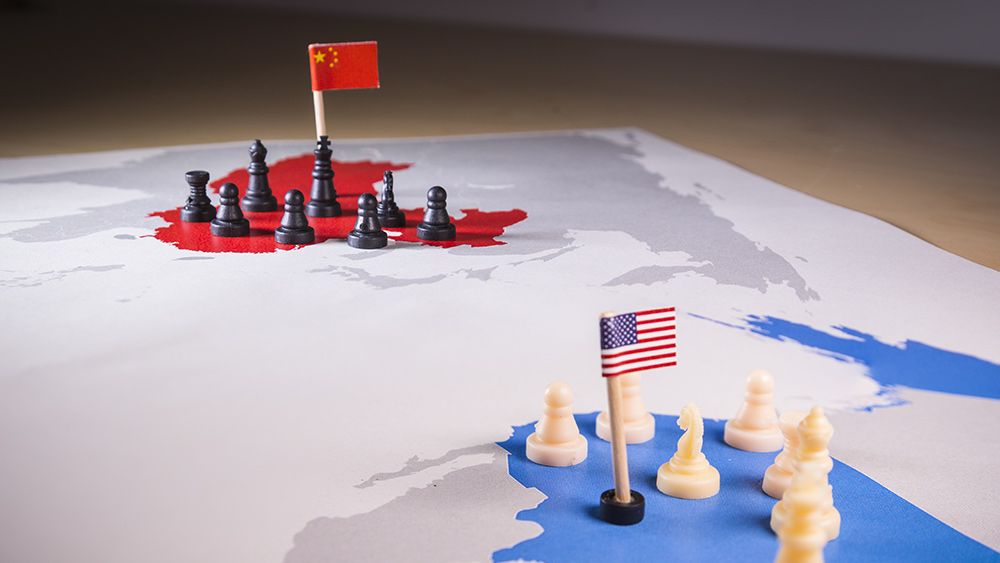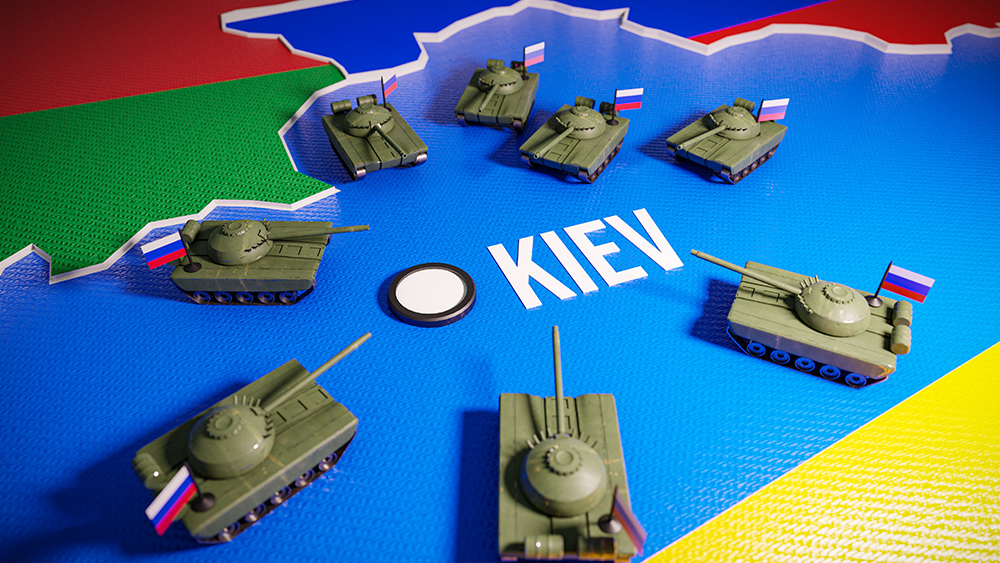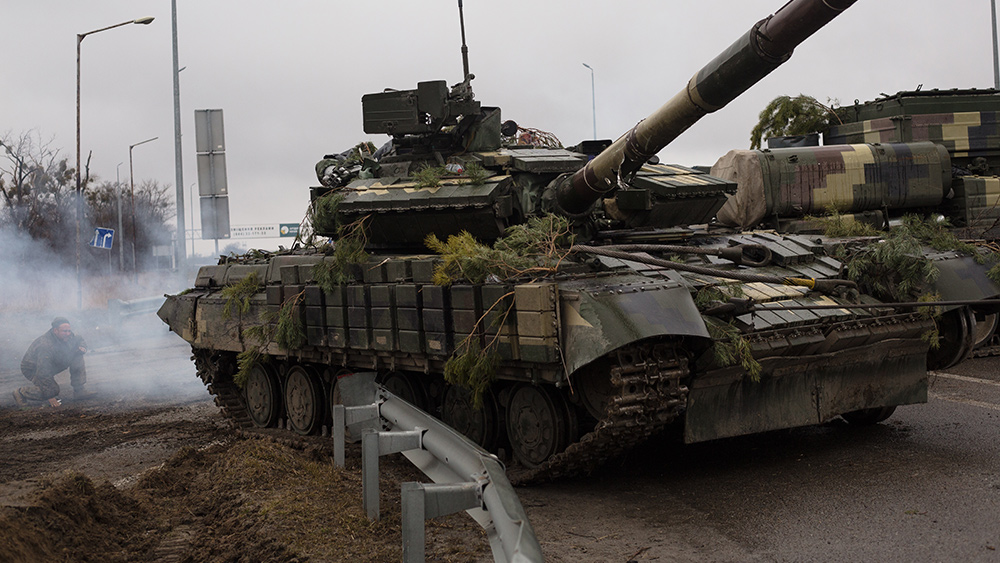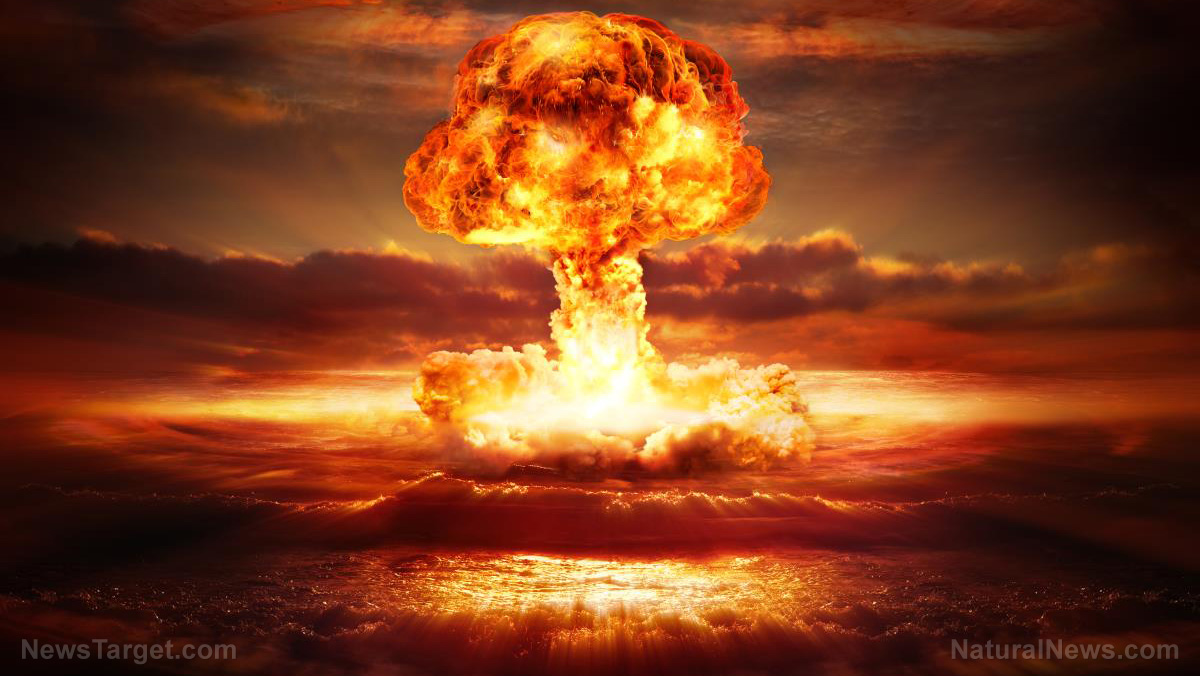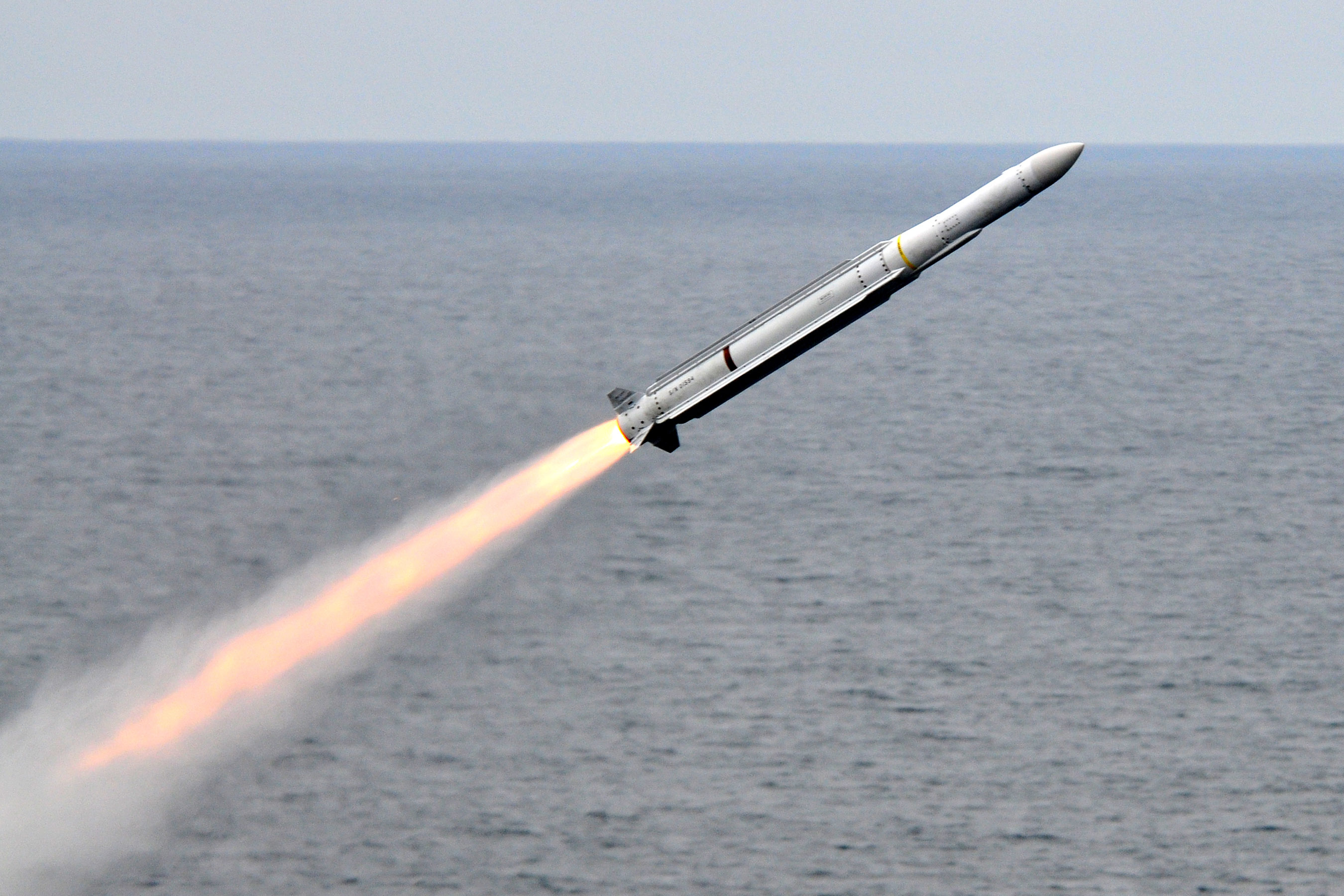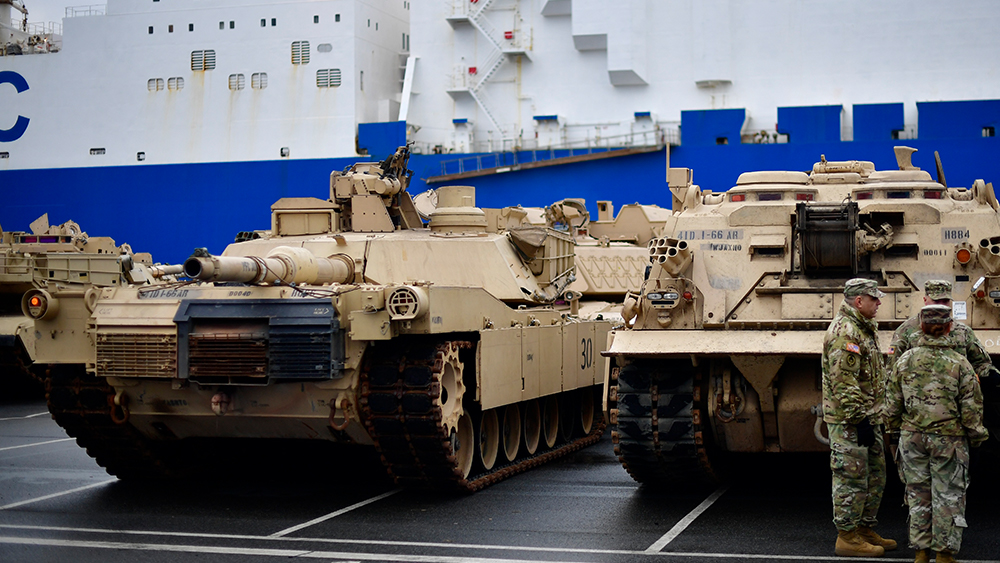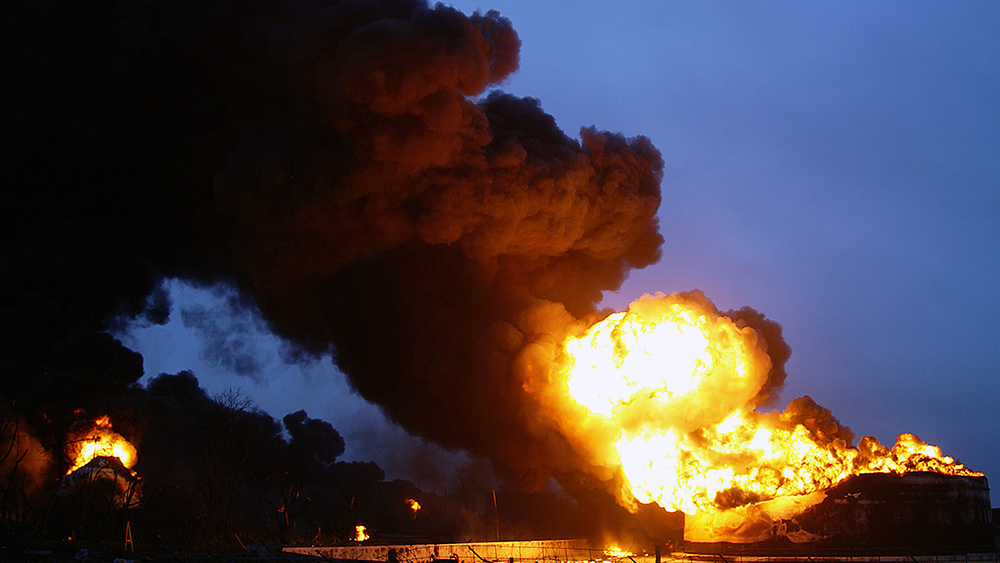UK to send Ukraine DEPLETED URANIUM tank rounds that could cause irreparable harm to the people and the land
03/27/2023 / By Arsenio Toledo
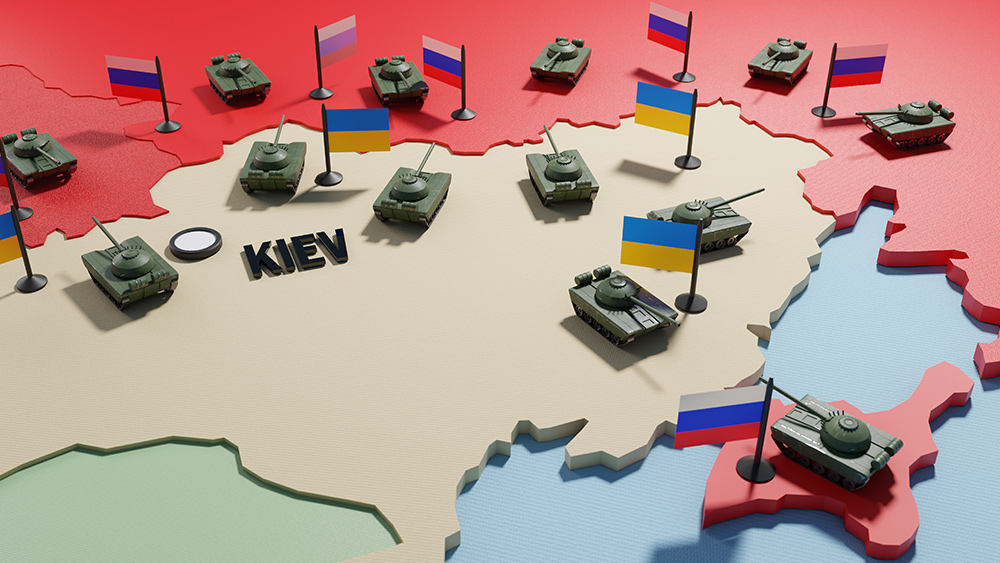
The government of the United Kingdom has recently announced that it will begin providing Ukraine with armor-piercing tank rounds containing depleted uranium. The Russian government has warned that using these shells in the ongoing conflict could cause irreparable harm both to soldiers and civilians.
Depleted uranium is a byproduct of the uranium enrichment process needed to create nuclear weapons. The rounds retain certain radioactive properties that could end up being harmful.
While not specifically used for its radioactive properties, depleted uranium is extremely dense, a quality that makes it very attractive for modern militaries as a projectile for piercing enemy armor and fortifications.
The U.K.’s current plan is to supply Ukraine with depleted uranium shells for use with the British-made Challenger 2 main battle tanks that the U.K. is sending over as part of its latest military aid package.
Russian President Vladimir Putin warned the U.K. that if it pushed through with this plan, the nation would “respond accordingly, given that the collective West is starting to use weapons with a nuclear component.”
“Depleted uranium is internationally recognized as a weapon of mass destruction,” warned Mike Adams, the Health Ranger, on an episode of his program the “Health Ranger Report.”
“From a military perspective, depleted uranium rounds are very, very effective,” noted Adams. “However, they are slightly radioactive, and when you use them, you create depleted uranium particulate pollutants, essentially. You basically blanket the area with depleted uranium dust.”
Use of depleted uranium rounds would poison Ukraine for centuries
The Russian Ministry of Defense warned that if Britain follows through with its plan to supply Ukraine with depleted uranium shells, it would have a devastating impact on the nation’s economy and population for centuries. (Related: UK national security compromised by munitions shortage after sending aid to Ukraine.)
Lt. Gen. Igor Kirillov, head of Russia’s Nuclear, Biological and Chemical Protection Troops, noted that only members of the North Atlantic Treaty Organization are known to regularly use armor-piercing tank rounds containing depleted uranium, most notably during the Iraq War, when the United States used at least 300 tons of depleted uranium.
“As a result, the radiation situation in the city of Fallujah was much worse than in the cities of Hiroshima and Nagasaki after the nuclear bombings by the United States,” said Kirillov. He even noted that Fallujah is nicknamed “the second Chernobyl” due to the skyrocketing number of cancer cases in the city caused by radioactivity.
Furthermore, Kirillov warned that the use of depleted uranium munitions would also cause irreparable harm to Ukraine’s farmlands.
“In addition to infecting its own population, this will cause tremendous economic damage to the agro-industrial complex of Ukraine … reducing any export of agricultural produce from Ukrainian territory for many decades, if not centuries to come,” he warned.
Learn more about the ever-escalating conflict in Ukraine at UkraineWitness.com.
Watch this episode of the “Health Ranger Report” as Mike Adams, the Health Ranger, explains how the U.K.’s decision to send depleted uranium ammunition to Ukraine will end up poisoning people for generations.
This video is from the Health Ranger Report channel on Brighteon.com.
More related stories:
Sources include:
Submit a correction >>
Tagged Under:
depleted uranium, genocide, military, military technology, nuclear, nuclear war, nuclear weapons, radiation, radioactive, radioactive materials, radioactive poisoning, radioactivity, Russia, Russia-Ukraine war, Ukraine, United Kingdom, weapons
This article may contain statements that reflect the opinion of the author
RECENT NEWS & ARTICLES
COPYRIGHT © 2022 UkraineWitness.com
All content posted on this site is protected under Free Speech. UkraineWitness.com is not responsible for content written by contributing authors. The information on this site is provided for educational and entertainment purposes only. It is not intended as a substitute for professional advice of any kind. UkraineWitness.com assumes no responsibility for the use or misuse of this material. All trademarks, registered trademarks and service marks mentioned on this site are the property of their respective owners.


